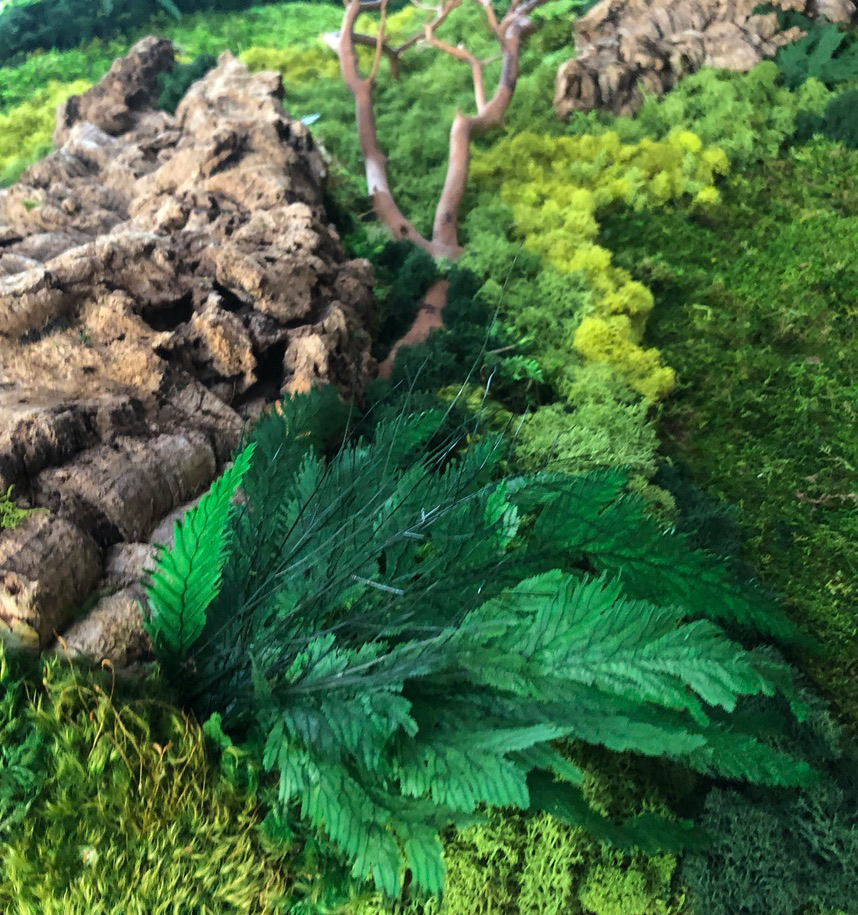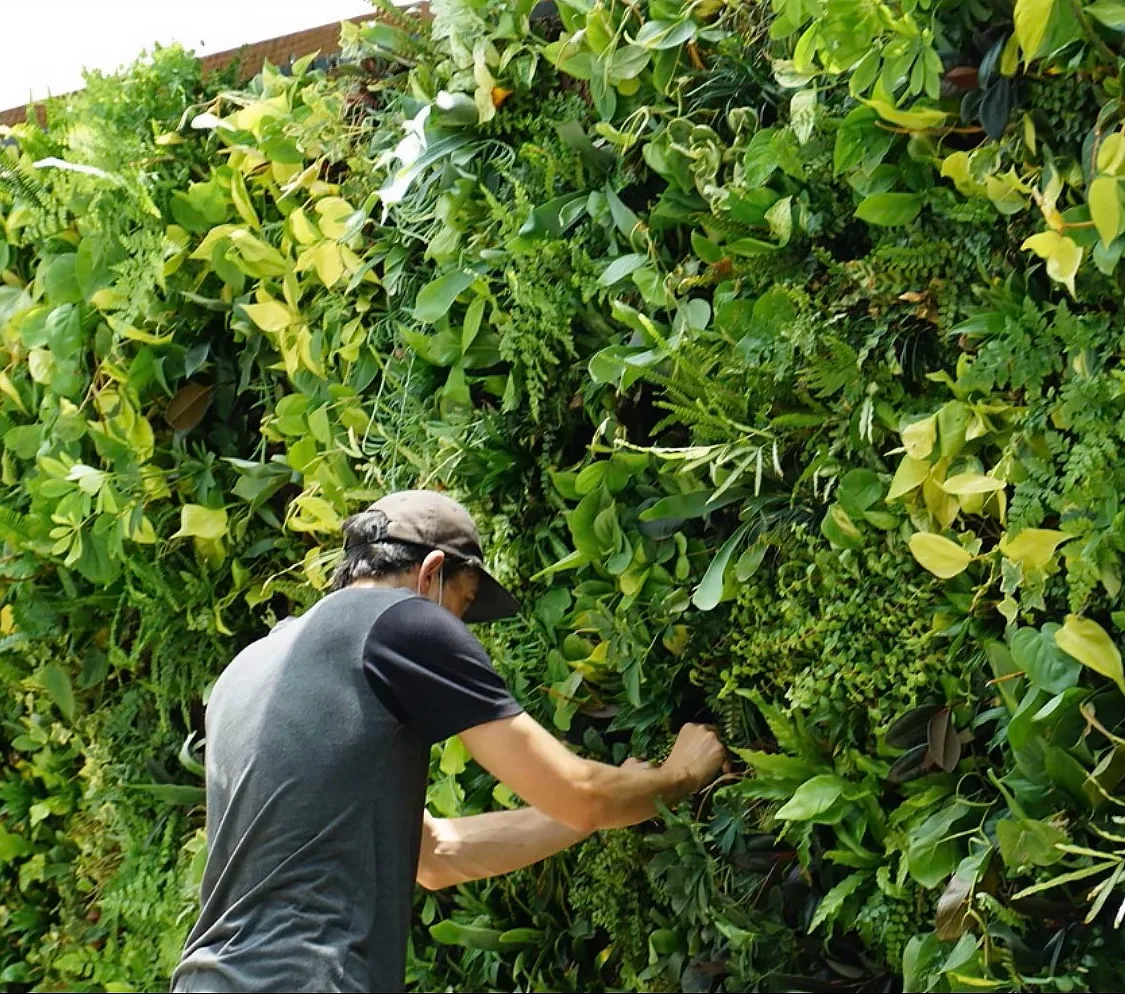Keep your moss or living wall looking fresh and lush all year round with these simple at-home vertical garden care tips. Although we are happy to provide plant care services for all types of living walls, it is important to provide our clients and plant lovers with the proper information and resources for their living walls to thrive and to keep their preserved moss walls looking their best.
TLC for Your Preserved Moss Walls
Moss walls are a great option for adding some greenery to your space because they provide a beautiful, natural focal point and require little to no maintenance. First and foremost when choosing a proper location for a moss wall, avoid direct sunlight on your moss wall, as it is best to have your moss wall in an interior space or a shaded exterior space that is protected from outdoor elements like wind, rain, direct sunlight, and high humidity. Since preserved moss is still a real plant that has been preserved, there are natural occurrences that can slightly alter the state of the moss, but there are several ways you can keep your moss looking fresh.
If your moss happens to be affected by a warm or dry climate, it can tend to get a bit dry. To restore its freshness, you can gently pat it with a clean damp cloth and lightly mist the moss with water. This will rehydrate the moss and keep it from getting too crisp or brittle. Also, if the moss happens to fade from receiving direct sunlight, there are different pigments and chlorophyll solutions that can be applied to the moss to restore its green and vibrant appearance.

How to Take Care of Your Living Wall
Check water moisture levels and make sure your living wall is getting a proper amount of water
Sometimes it can be hard to tell if your living wall is getting the right amount of water. Since seasons and weather are always changing and conditional, the correct amount of water may need to be adjusted to what’s suitable during that time of year. For most interior walls, the weather or season most likely won’t have a significant effect on the amount of water required, but even the amount of sun through a window or indirect sunlight can have a slight effect and should still be monitored. Having a heater on, especially if the vents are close to the living wall, during the cooler months could also cause moisture to evaporate, therefore placing more importance on regularly monitoring your living wall.
Typically for an indoor tropical plant living wall, having more water as opposed to less is preferred, thus a full watering once a week or even every other week should be sufficient depending on the space. Additionally, tropical plants are adapted to higher humidity in the air and therefore greatly benefit from a misting of the leaves every other day. Removing excess dust can also allow the plants to receive enough light, which is better for the air, and also looks better in appearance.
Prune and clip excess dried leaves, stems, or overgrown areas that are getting too heavy
It’s always good to clip back any dried or dead leaves that may develop with trimming scissors or garden shears. This allows for enough light to get to all areas of the plant and allows air to circulate more freely throughout the plants and helps to prevent excess moisture and root rot. You don’t want to have too much overgrown dead leaf accumulation throughout your living wall or any garden as it can create a space for dust, bugs, or potential unwanted pests.
Check to see if the roots are exposed
You can check the roots of your plants at the base of the plant where the plant is inserted in the living wall. Root exposure is a sign that the plant is overgrowing its space and either needs to be transplanted or perhaps could use more soil or organic matter to cover the roots in the hole, pod, or container in which it’s planted.
Like all living things that grow bigger, having a space that is adequate for proper growth is necessary for plants. Plant roots like to have a bit of room to grow but not too much as well. The plant roots should be secure but not packed too tightly, just like having the right size bed for a body type. You wouldn’t put a baby in a king-size bed, or a large adult in a small crib, so making sure the roots are in a proper amount of space will help your plant feel more comfortable with enough space to keep growing.
Getting to Know Your Vertical Garden
These are some easy at-home vertical garden care tips you can do to keep your living wall, plants, or moss wall looking healthy and happy. Even if you don’t have the greenest thumb, working with plants is always a learning experience and there is much you can gain from observing how the plants behave and react to different conditions. Keeping an eye on the weather and external conditions is always a good idea as you assess how your plants are growing. We are always happy to provide our insight and do a full analysis of your vertical garden conditions if ever needed.




